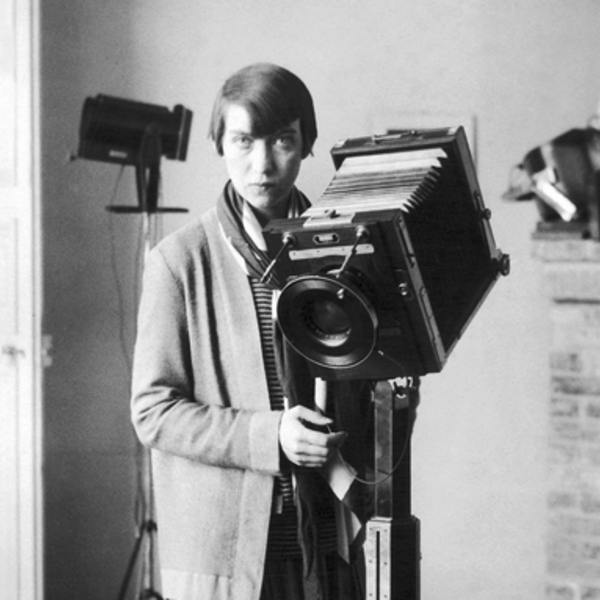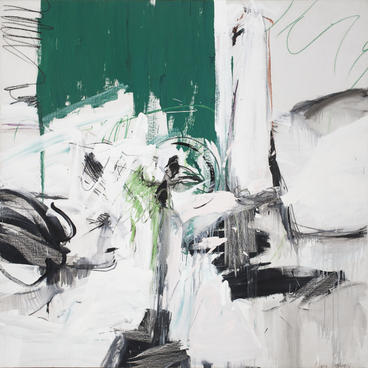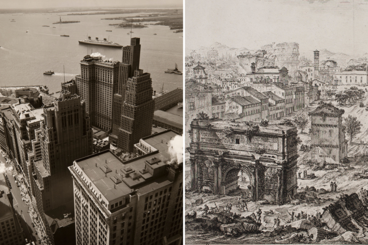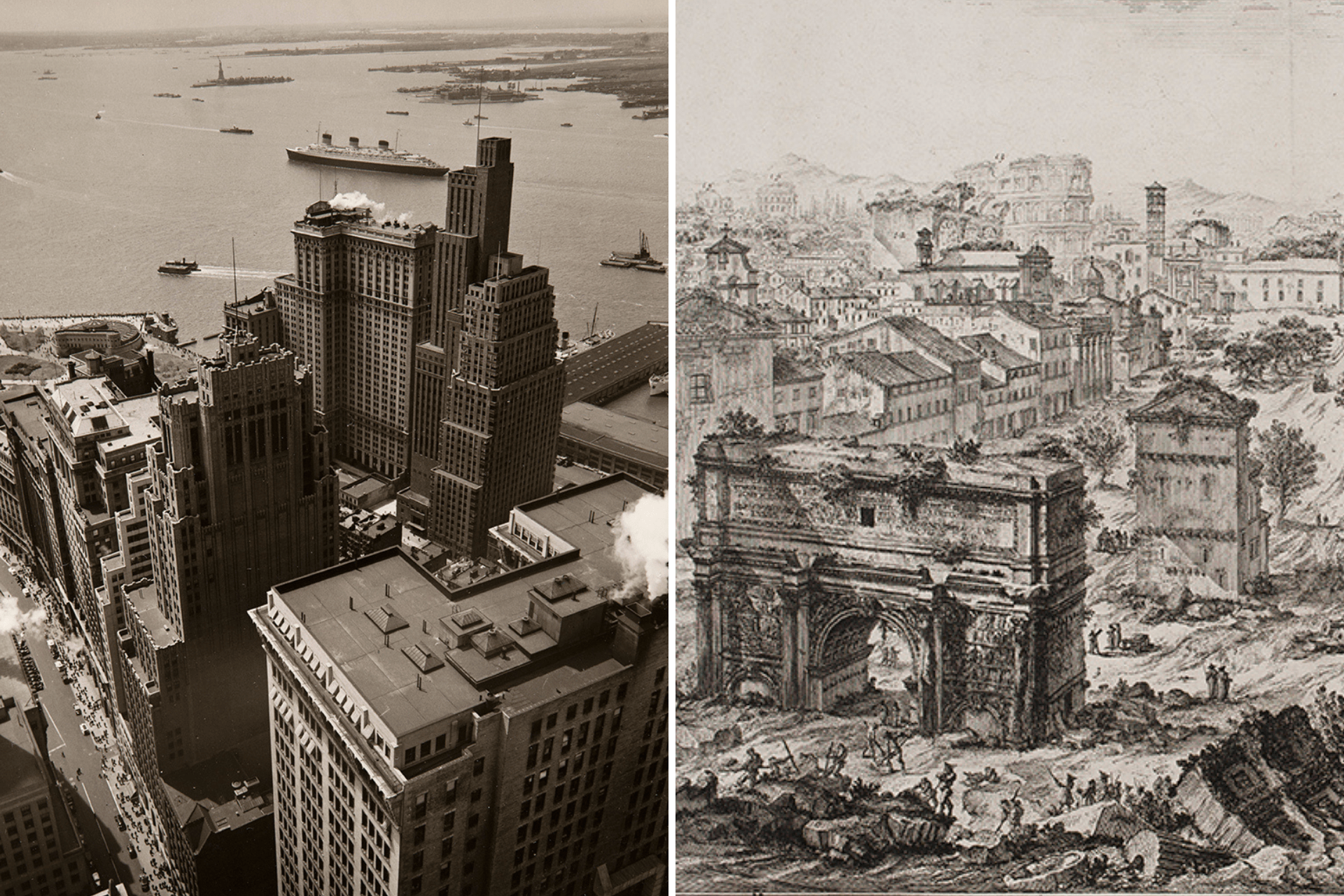
This summer, Weisman Art Museum is pleased to present Capturing Change: The Urban Images of Berenice Abbott and Giovanni Battista Piranesi, works by two artists who created art to document their cities at key moments of change, offering visual chronicles of urban transformation, recombinations, decay, and renewal. Abbott’s striking photographs of New York City in the 1930s and Piranesi’s intricate etchings of Rome in the eighteenth century both capture the essence of these cities-in-flux, dramatizing the landscape and presenting a palpable feeling of place.
This exhibition, curated by the Weisman's 2018-19 O'Brien Fellow Ben Weil, focuses on the artists’ treatment of monuments, street scenes, and urban juxtapositions of old and new. Capturing Change is the culmination of Weil's year-long curatorial fellowship, during which he embarked on new research on works in the Weisman's collection, raising questions and points of connection informed by his areas of interest and expertise. A student of medieval Italian art, for this exhibition, Weil puts Piranesi's gaze in conversation with Abbott's, though they are far removed from one another in space and time, and in so doing offers a fresh lens on the flux of city life.
Berenice Abbott studied photography with the surrealist Man Ray in Paris in the 1920s, but she soon adopted a more documentary style, rejecting any distortion or manipulation of what she considered to be the “truth” of photography. Upon returning to New York in 1929, Abbott was seized by a “fantastic passion” for the city, which she set about photographing in a decade-long project she called Changing New York. Abbott loved the soaring art deco skyscrapers and massive infrastructure projects that were being constructed around her, but she also had a fondness for the older buildings that these structures replaced. She saw her project as documenting this change, exalting the new while preserving the old through her art. For example, in Murray Hill Hotel: Spiral, Abbott contrasts the ornate spiral balconies of a nineteenth-century hotel with the sleek lines of a recently completed skyscraper. The Murray Hill Hotel’s decorative wrought iron appears to be an elaborate relic of a bygone era in the face of the ordered efficiency of modern architecture.
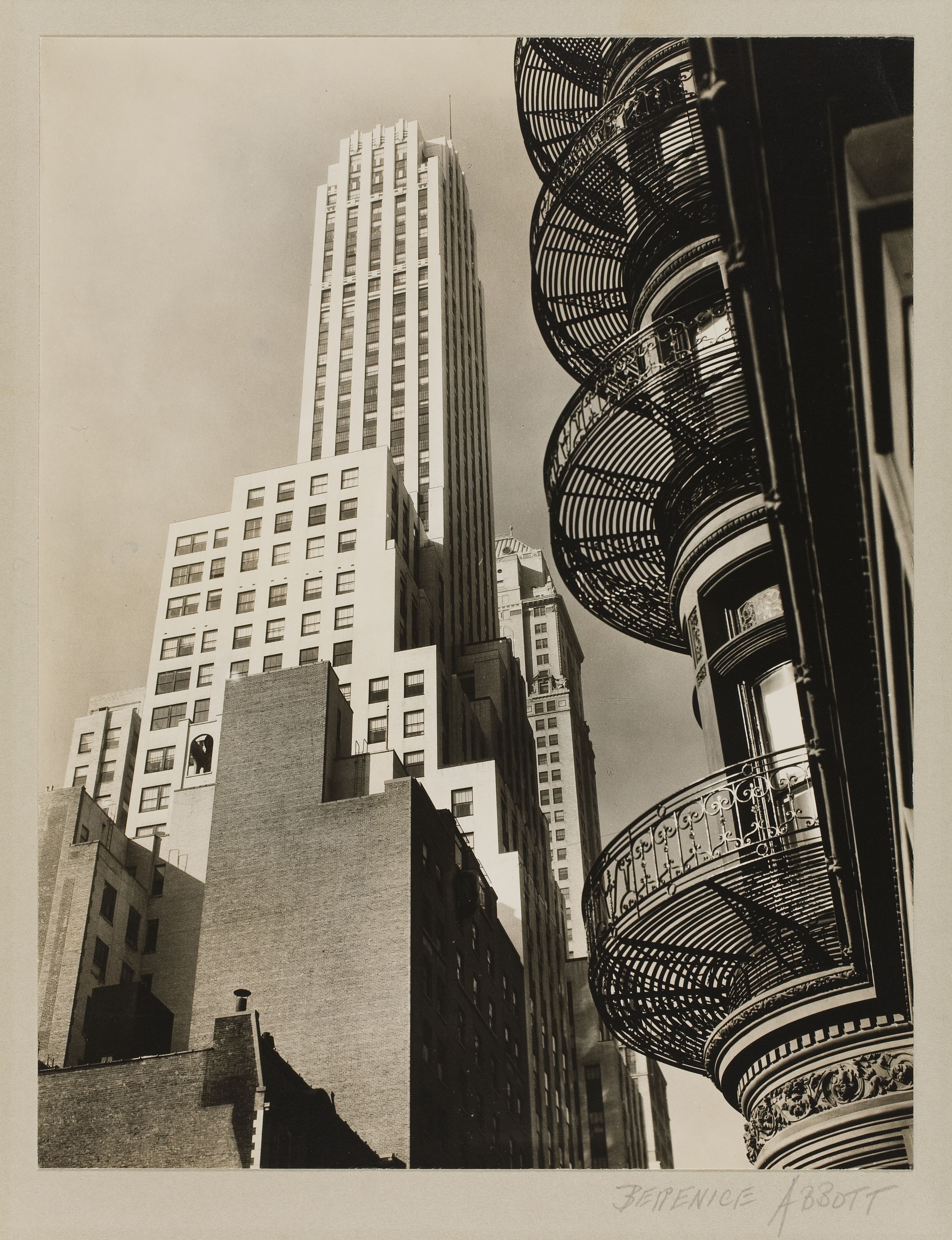
Giovanni Battista Piranesi takes a similar approach in his etchings of Rome, depicting the city’s ancient monuments as well as its modernizing eighteenth-century cityscape. As a pioneer of Roman archaeology, Piranesi painstakingly portrayed ancient ruins with exacting detail in an attempt “to preserve them forever by means of my engravings.” At the time, a debate over the superiority of ancient Greek or Roman art was raging in European academic circles, and Piranesi naturally fell on the side of Rome. His saw his detailed etchings as arguments in favor of the supremacy of Roman architecture, and he designed his compositions to evoke the fantastic past of his subjects. With his image of the Theater of Marcellus, Piranesi ties the old and new together. The remains of this ancient Roman theater were transformed into lavish living quarters in the Renaissance, and Piranesi expertly represents the various textures of these different building techniques. People go about their daily lives on the street below, which winds its way back into the city. Swirling clouds and the play of shadow add drama to the composition.
While Abbott and Piranesi are separated by their time, place, and choice of medium, the artists are united by their goals of recording urban transformations and preserving the history of their cities through art. Capturing Change examines the way two artists set about describing their cities and provides a window into the evolving histories and landscapes of New York and Rome.
About the Exhibition Curator

Ben Weil is a third-year PhD student at Northwestern University where he studies medieval Italian art with an emphasis on representations of cities and civic identity. He was an O’Brien Curatorial Fellow at the Weisman Art Museum in 2018–19 and, in addition to serving as guest curator for Capturing Change, he contributed to several exhibitions, including The Persistence of Mingei: Four Generations of Ceramic Artists and B.J.O. Nordfeldt: American Internationalist. He graduated from the University of Michigan with a BA in Art History and International Studies in 2018. Photo courtesy of Ben Weil.
Learn more about the E. Gerald and Lisa O’Brien Curatorial Fellowship at WAM
